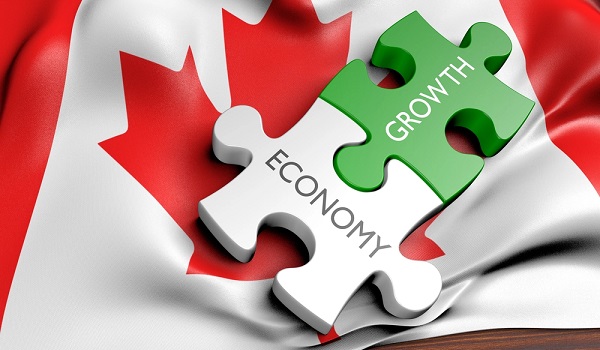Canada’s GDP per capita drops 7% – a decline in standard of living
Real output per capita has fallen to seven per cent below its long-term trend since the pandemic, resulting in a decline of roughly $4,200 per person, according to a new report by Statistics Canada.
To reverse the trend, GDP per capita, a metric used by economists together with other economic indicators to evaluate a country’s standard of living, would need to grow at an average yearly rate of 1.7 per cent, authors Carter McCormack and Weimin Wang found.
That figure is close to the expansion in GDP per capita seen in the U.S., which swiftly recovered from pandemic economic lags and currently ranks as the most productive country in the G7, according to RBC.
Meanwhile, GDP per capita in Canada has plummeted to levels observed in 2017 based on historical data from 1981 until 2023.
“Per capita growth of this magnitude is ambitious and a marked departure from recent trends,” McCormack and Wang wrote.
A main force behind a slower economy has been the Bank of Canada’s aggressive campaign to control inflation by hiking interest rates and its lasting effects.
Economic output has also not kept up with the pace of population growth. In 2023, the number of residents in Canada grew 3.2 per cent, which is equivalent to 1,271,000 people — or the size of Calgary — according to Statistics Canada.
This is fuelling concerns around a crisis plaguing Canada’s labour productivity, which is responsible for a large chunk of GDP per capita growth. Number of hours worked per employee and employment rates also contribute to output per person.
Labour productivity measures how efficient a country is at using domestic resources, including an educated workforce, machinery and technology, to produce goods and services.
This doesn’t necessarily mean that Americans work harder than Canadians, but rather, that they are better at leveraging equipment and production processes to power the economy.
Last month, Bank of Canada’s senior deputy governor Carolyn Rogers warned that low productivity in Canada has reached emergency levels.
“You know those signs that say, ‘In an emergency, break the glass?’ Well, it’s time to break the glass,” she said while addressing a Halifax audience.
Low productivity hampers wage growth, while creating a favourable environment for stubborn inflation. Many economists have been saying for some time that Canada’s productivity crisis is the main factor explaining low affordability in Canada.
Improving productivity requires greater capital spending. But weak competition between businesses in industries such as telecommunications, the authors say, has hindered investment.
The logic is that more competition incentivizes spending in innovation, which, in turn, improves productivity as well as prices and range of offerings for Canadians.
A February report by North Economics found that the lack of competition in Canadian retail banking services is costing customers $8.5 billion annually in fees, which is equivalent to $250 per adult Canadian per year, for example.
McCormack and Wang say that the ability of Canadian companies to adapt to artificial intelligence, robotics and digitalization “will be critical to the link between investment and productivity in the coming years and potentially important contributors to changes in living standards.”
This article was firs reported by The Star
















